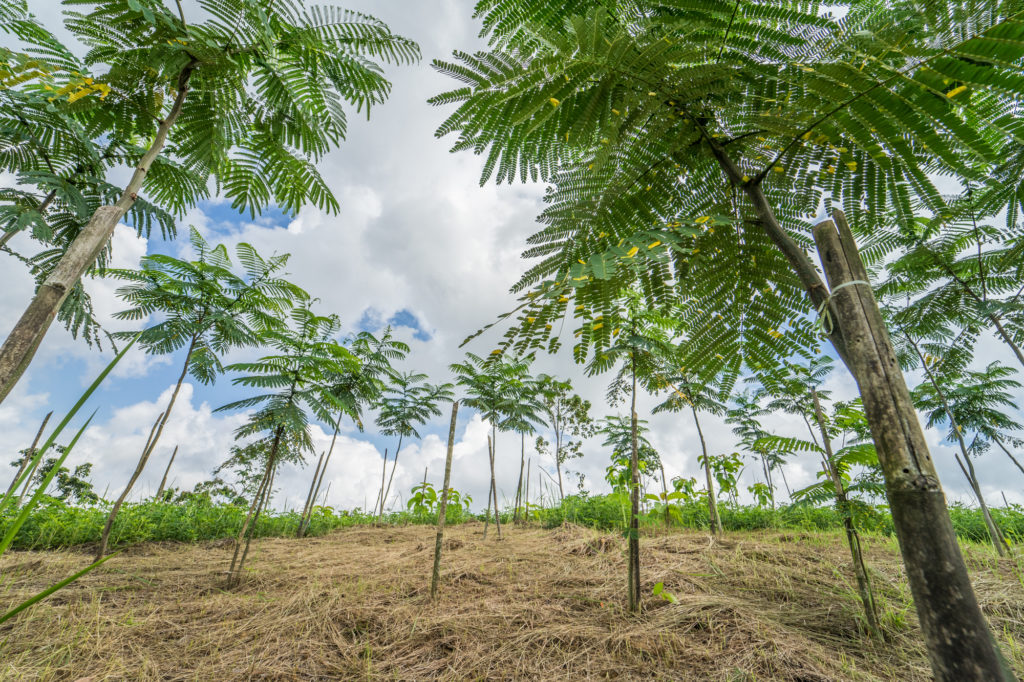
Description
| Name | Paraserianthes falcataria |
| Synonyms | Sengon (laut), Moluca, Batai, Albizia, Jeungjing |
| Native Distribution | Australia, Indonesia, Papua New Guinea, Solomon Islands |
| Biology | Up to 40m height, 100cm diameter, with spreading flat crown |
| Ecology | Fast-growing pioneer |
| Habitat | Often in secondary lowland rainforest and light montane forest, up to 1600m altitude; on a wide range of soils, alkaline to acid, but deep and well-drained, fertile soils such as friable clay loam |
| Wood |
Heartwood whitish to pale pinkish, yellowish or reddish brown; not clearly demarcated from sapwood in young trees, in old trees more clearly; moderately coarse but even texture; soft and light-weight wood, density between 230 to 500 kg/m3; straight or interlocked grain; not durable, treatment recommended; APPLICATION: pulp and paper, light construction, furniture, packaging and pallets, wooden shoes, music instruments, veneer, plywood, particleboards, wood-wool boards, blockboards and hardboards, fuelwood |
| NTFPs | Leaves are fodder for chickens and goats, bark has tanning properties |
| Services | Erosion control, shade and shelter, nitrogen fixation, |
| Other Info | Trees coppice well; suitable for reforestation and afforestation, sometimes used for agroforestry |